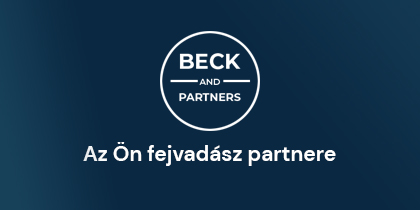What to do if you have a toxic leader in your company?
Many people know, but few talk about it. Toxic leaders are present in many organisations, but little is known about what characterises this style of leadership, how to recognise the warning signs and what to do about it. A recent study by researchers from Corvinus University of Budapest and the University of Debrecen (DE) may provide clues to better recognise and manage toxic leadership in organisations.
The main characteristic of toxic leadership is the psycho-emotional distress of employees, and the more everyone is harmed, the more "toxic" the perception of the leader, according to university research published in the journal Management Science. Corvinus and DE staff used in-depth interviews, focus group discussions and an online questionnaire to explore the phenomenon in Hungary.
What is a toxic leader like?
A leader perceived as toxic is generally unpredictable, makes decisions on a whim, sets unrealistic goals, is reluctant to cross ethical and personal boundaries, and does not communicate expectations well. They are characterised by a need for dominance, a lust for power, extreme manipulativeness, unethicality, and high intellect and charisma, but often lack competence. He likes to blame, intimidate, humiliate and pass the buck to his subordinates. He is not a team player and takes ownership of team results, making him appear productive, which can win him the support of senior management. Organisations with a strong competitive spirit often support managers who overwork their subordinates and create a negative atmosphere.
"Toxic leadership can only persist if it is tolerated, even expected, by the values and leadership selection practices of the organisation, and if members of the organisation are too acquiescent. The larger the organisation, the more time, even years, it takes for the destructive consequences of toxic leadership to become apparent," stresses Julianna Czifra, first author of the study.
A toxic leader poisons the atmosphere by causing constant emotional frustration. Employees become burnt out, overworked, unmotivated, get sick more often, complain a lot, form cliques, go into survival mode and go through a grief-like process. Organisational performance deteriorates, decision-making slows down, creativity, innovation, loyalty decreases, turnover increases. A culture of fear, mistrust and distorted information flows develop.
What can we do about it?
Toxicity is difficult to avoid, but once it is in place, it needs to be addressed as soon as possible to prevent it from becoming embedded in the organisational culture and avoid a negative spiral. This requires that toxicity is recognised in the organisation and change is initiated, for example by HR or a senior manager. It is important to educate employees on how to recognise toxicity, what they can do when they notice toxic behaviour, for example by reporting it to HR, their line manager or by reporting it through an internal anonymous channel. It is also worth providing information on what psychological support the person can seek to help them deal with the situation.
If the behaviour of the number one manager or owner is toxic, it is the job of the management level below them to counteract the toxicity by "holding an umbrella" over the employees. It is also important to bring in outside expertise: a combination of coaching and psychotherapy would be most effective, where the manager is collaborative and works on both skills and personality development, but complete change is not guaranteed.
It is worth regularly assessing the organisational climate, strengthening HR processes related to manager selection and performance appraisal, and maintaining and developing an organisational culture and values that do not tolerate norm- and rule-breaking behaviour by managers, the authors stress.
- 2025.11.25Pannon HR Konferencia Budapest A Pannon HR Konferencia Budapest 2025 a humánerőforrás-szakma egyik kiemelt találkozója, ahol elismert szakértők – Tari Annamária, Molnár Attila, Gácsi Anna, Dr. Sipka Péter és Sipka Bence – osztják meg tapasztalataikat a legaktuálisabb HR-trendekről és kihívásokról. Egy nap, amely inspirációt, tudást és értékes szakmai kapcsolatokat kínál minden HR-szakember számára.
Részletek
Jegyek
- 2025.12.03Humán controlling A képzés során megtanulhatja, miként támogathatja a controlling szemlélet a HR-stratégiát. Megmutatjuk, hogyan tervezze és kontrollálja a személyi jellegű ráfordításokat, elemezze a munkaerő költségeit és megtérülését, valamint, hogyan alkalmazza a teljesítménymenedzsment és a humán tőke elemzés legfontosabb módszereit a vállalati hatékonyság növelése érdekében.
Részletek
Jegyek
- 2026.01.29Bértranszparencia irányelv és diszkrimináció-tilalom Szakmai képzés a bértranszparenciáról és a diszkriminációról HR szakembereknek és vezetőknek. Készüljön fel munkajogászainkkal az EU új bérátláthatósági szabályaira!
Részletek
Jegyek
- 2026.01.31Vállalati szimuláció Valós piaci helyzetben egy-egy döntés meghozatalakor helyt kell állnia mind vezetői, mind kontrolleri képességeinknek. Mennyivel egyszerűbb lenne, hogyha mi is úgy gyakorolhatnánk, mint egy pilóta, aki éles felszállás előtt, a szimulátorban tanulja meg a vezetést, míg kellő rutinra tesz szert. Ez megvalósítható ma már az üzleti életben is.
Részletek
Jegyek
Why do company owners and managers think it's natural that part of our work is a "gift," when we definitely don't get more goods in the store for the same... Teljes cikk
According to a recent survey, the majority of Hungarian workers would only support the introduction of a four-day work week if the daily working time would not... Teljes cikk
Dare to ask questions, experiment, come up with your own ideas and challenge opinions. All without fear of retribution. Such a work environment makes your... Teljes cikk
- Market Research Analyst 3 hete
- Nincs szánalmasabb közhely annál, hogy "ezek a mai fiatalok" 4 hete
- Megújul a Shell Hungary vezetősége - novembertől új HR-vezető is érkezik 1 hónapja
- Új ügyvezető igazgató a Raben Hungary élén 2 hónapja
- How to recognize a toxic workplace? 2 hónapja
- Elismert rangsorra került fel a Corvinus Egyetem 2 hónapja
- Eljött a HR-es varázslók ideje: jön a fekete hattyú? 2 hónapja
- Marik Gyula a Shell Hungary új igazgatósági elnöke 2 hónapja
- Elbocsátották az SAP Hungary ügyvezető igazgatóját, ez volt az indok 3 hónapja
- Free overtime? Natural for Gen X, absurd for Gen Z 3 hónapja
- Hogyan formálható értékké az irodai jelenlét? 4 hónapja



 Mi történne, ha egy napra minden nő szabadságra menne?
Mi történne, ha egy napra minden nő szabadságra menne?